how many solar panels do you need to produce 15 kwh per month
Are you wondering how many solar panels you need to produce 15 kWh per month? This question is more common than you might think, and it’s a crucial starting point for anyone considering solar power. Figuring out exactly what you need can seem complicated with so many variables—from sunlight hours to panel wattage and system losses. But don’t worry: this comprehensive guide will walk you through it step by step. By the end, you’ll know exactly how many panels you need, how to calculate it, and what to consider before buying.
- Why You Need to Understand Your Energy Goals
- How Much Energy Do You Need? A Realistic Look
- Factors You Need to Consider for Solar Panel Sizing
- How Many Panels You Need Depends on Where You Live
- What Size Panels Do You Need?
- The Need for Storage and Backup
- Cost Considerations You Need to Keep in Mind
- Practical Examples of What You Need
- Maintenance You Need to Plan For
- Common Mistakes You Need to Avoid
- How Many Solar Panels Do You Need to Produce 15 kWh per Month?
Let’s dive deep into everything you need to know about designing a small-scale solar system to reliably deliver 15 kWh per month.
Why You Need to Understand Your Energy Goals
Before you buy anything, you need to be clear on your energy goals. Producing 15 kWh per month isn’t a lot—it’s about 0.5 kWh per day. That’s very small compared to average household usage, but it might be perfect for certain needs:
Off-grid cabins
Small sheds
Remote sensors
Tiny homes
Backup/emergency lighting
Hobby projects
If you don’t match your system size to your actual need, you’ll either waste money on unnecessary panels or fall short of power.
How Much Energy Do You Need? A Realistic Look
Let’s make sure you know what 15 kWh per month really means.
How much is 15 kWh?
15 kWh / month ≈ 0.5 kWh / day
500 Wh / day
What can you need that amount for?
|
Appliance Example |
Daily Usage (Wh) |
Feasible? |
|
LED lighting (5-10 bulbs) |
50-100 Wh |
✅ Yes |
|
Phone charging |
10-20 Wh |
✅ Yes |
|
Small laptop |
50-100 Wh |
✅ Yes |
|
Mini fridge |
200-400 Wh |
⚠️ Maybe |
|
Microwave / kettle |
800-1500 Wh |
❌ No |
So if your need is limited to light loads, 15 kWh/month may be enough. But you need to plan carefully.
>>See also how many solar panels do you need to generate 15kwh
Factors You Need to Consider for Solar Panel Sizing
Many people ask "How many panels do I need?" without realizing how many variables affect the answer. Let’s unpack them.
1. Sunlight Hours
The single biggest factor in sizing is peak sun hours (PSH).
Peak sun hours ≠ daylight hours
It’s the equivalent number of full-intensity sun hours per day
Example:
Arizona ≈ 6–7 PSH/day
Germany ≈ 2.5–3.5 PSH/day
Average U.S. ≈ 4–5 PSH/day
You need to know your location’s PSH to get realistic estimates.
2. Panel Wattage
Solar panels come in many sizes:
50W
100W
200W
350W
400W+
The more wattage per panel, the fewer panels you need.
3. System Losses
No system is 100% efficient. Typical losses:
Inverter: 5–10%
Wiring: 2–5%
Dirt/shading: 5–15%
You need to factor in ~20% loss overall to be safe.
4. Battery Storage (Optional)
If you want to use power at night, you need storage. Batteries increase cost and complexity but may be essential for off-grid setups.
How Many Panels You Need Depends on Where You Live
Example: How Many Panels Do You Need in Sunny Regions
In Arizona (6–7 PSH):
600 Wh / 6 PSH ≈ 100W
One 100–150W panel may be enough
Example: Example Calculation for Arizona
100W panel × 6 PSH = 600 Wh
Matches your need exactly
Example: How Many Panels Do You Need in Cloudy Regions
In Northern Europe (2.5–3.5 PSH):
600 Wh / 3 PSH ≈ 200W
You’d need:
Two 100W panels, or
One 200–250W panel
Panel Wattage and How Many Panels You Need
Example: What Size Panels Do You Need?
Common choices:
100W: good for flexibility, modular
200–250W: balanced, fewer connections
350–400W: fewer panels needed, lower install effort
Example: How Many 100W Panels Do You Need?
2 panels in sunny zones
3 panels in average zones
4 in low-sun regions
Example: How Many 400W Panels Do You Need?
Usually just 1 panel is enough
Excellent for space-limited installs
The Need for Storage and Backup
Example: Do You Need Batteries for 15 kWh per Month?
If you only use power during the day → maybe not.
If you need power at night:
12V 100Ah battery ≈ 1.2 kWh
Need 12V 300Ah battery for 15 kWh storage (with 50% DOD for lead-acid)
Lithium batteries:
12V 150Ah (usable capacity ≈ 1.8 kWh)
You’d need 8–9 kWh of lithium to store 15 kWh with headroom
Example: How Many Batteries Do You Need?
Depends on chemistry (lead-acid vs. lithium)
Depends on daily vs. monthly draw
Balance of System Components You Need
Example: What Else Do You Need Besides Panels?
You’ll need:
Charge controller (PWM or MPPT)
Inverter (if AC loads)
Batteries (if off-grid)
Mounting racks
Wiring, fuses, disconnects
These components match your system size and need careful selection.
Cost Considerations You Need to Keep in Mind
Example: How Much Do You Need to Spend?
Approximate budget:
Panels: $0.5–$1 per watt
Charge controller: $50–$300
Battery: $100–$1000+ (depends on chemistry and capacity)
Inverter: $100–$500
Misc wiring: $50–$200
A 15 kWh/month system can be under $1000 DIY, or $2000–$3000 turnkey.
>>See also Cost of a 15kWh Lithium Battery in the US
Practical Examples of What You Need
Example: Off-Grid Shed
2 × 100W panels
20A MPPT controller
12V 100Ah battery
Small inverter
~$500–$700
Example: Tiny Home Minimalist Setup
1 × 400W panel
40A MPPT controller
12V 150Ah lithium
500W inverter
~$1000–$1500
Example: Maintenance You Need to Plan For
Cleaning panels every few months
Checking wiring connections
Battery maintenance (if lead-acid)
Monitoring charge levels
Proper care ensures your system meets your need for years.
Example: Common Mistakes You Need to Avoid
Ignoring system losses
Forgetting local sunlight data
Underestimating storage needs
Mixing incompatible components
Skimping on quality
By avoiding these mistakes, you ensure your system reliably meets your need.
How Many Solar Panels Do You Need to Produce 15 kWh per Month?
By now you can see there’s no one-size-fits-all answer to "How many solar panels do you need to produce 15 kWh per month?"—it depends on where you live, your sun hours, panel wattage, and efficiency losses.
But with the formulas and guidance above, you can confidently design a system tailored to your need:
✅ In sunny areas → 1–2 small panels
✅ In average areas → 2–3 mid-sized panels
✅ In cloudy areas → 3–4 smaller panels or 1–2 large panels
Always size your system to meet your real-world need, factoring in usage patterns, location, and budget.
Ultimately, solar is flexible, scalable, and accessible even for small 15 kWh/month targets—making it easier than ever to power your off-grid cabin, tiny home, or remote site reliably and sustainably.
If you’re ready to design your system, just remember to check what you need carefully. That’s the best way to save money and ensure you have power when you need it most.

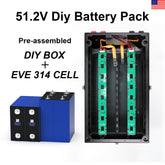

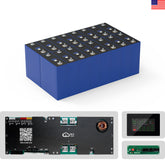

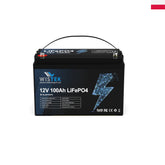
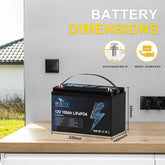
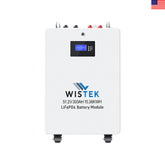
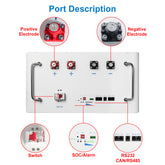
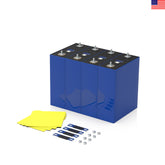
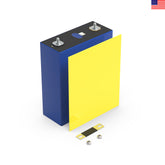
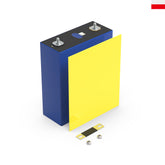

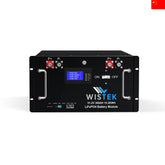
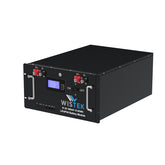
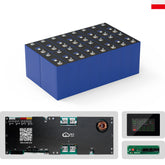








Leave a comment
All blog comments are checked prior to publishing